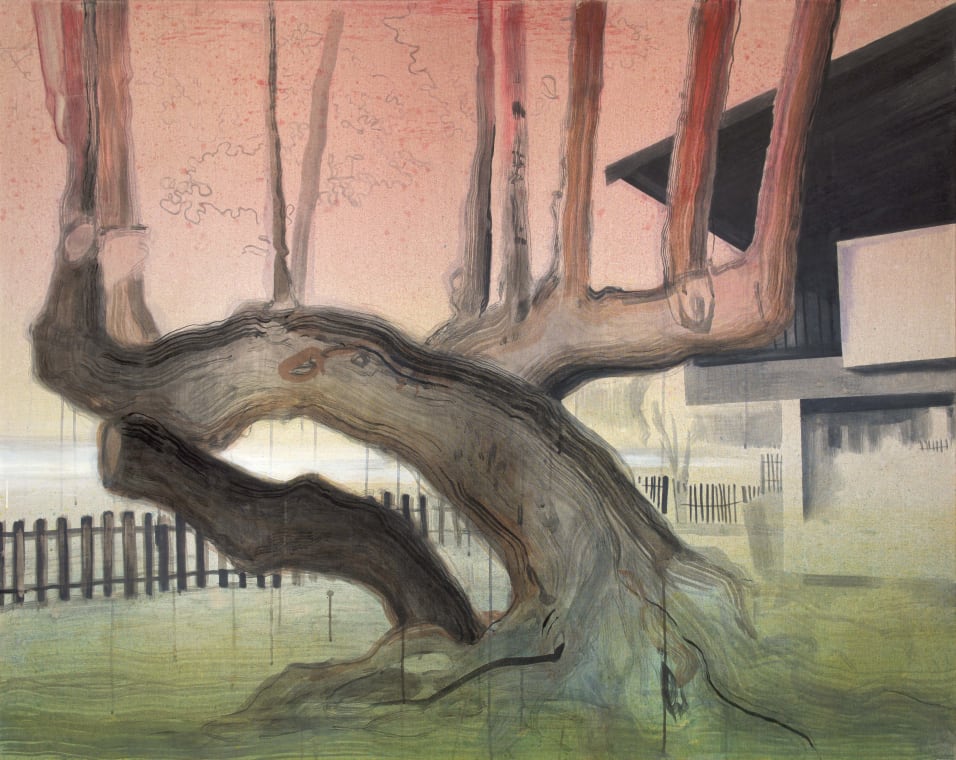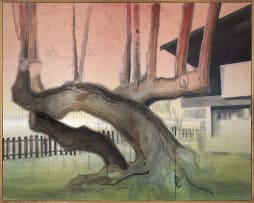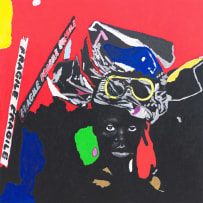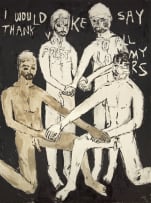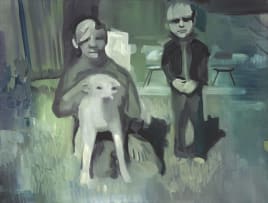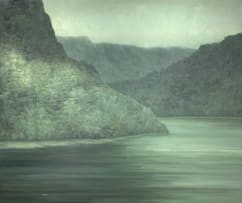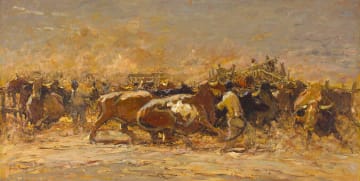Ten Years Gone-Gr
Lisa Brice
Incl. Buyer's Premium & VAT
About this Item
signed and dated 09 on the reverse
Notes
Lisa Brice is best known for her striking paintings of women at leisure rendered in vivid blue and red. The works often reference early modernist European paintings by men. Brice arrived at her current style and subject circuitously. Her 1993 debut solo was composed of assured neo-expressionist paintings exploring feminist themes. Brice, though, was unconvinced of painting's "relevance and vitality" in a changing South Africa, and jettisoned painting in favour of sculpture, installation and lens-based media.1 Her graphically bold and ironic work explored themes of domesticity, violence and identity. It conveyed the heady, post-painterly zeitgeist of 1990s South Africa. In 1998, having achieved considerable status in her homeland, Brice travelled to London for an artists' residency. A brief sojourn turned into a permanent relocation.
In 1999, Brice travelled to the dual-island Caribbean nation of Trinidad and Tobago to participate in another residency. She was immediately smitten and kept returning. Trinidad was important in Brice's rediscovery of painting as it was there that she met and befriended painters Peter Doig and Emheyo Bahabba, aka Embah. Their influence is palpable, albeit indirectly. Brice shares with Doig a pronounced interest in intoxicating colour and magical scenography, as well as a commitment to narrative and historical quotation. Brice has admiringly written about her mentor Embah, praising his complex synthesis of figurative social realism and mystic spiritual abstraction in his paintings.2 Her own work similarly negotiates what Brice has described as "the realms of the seen and unseen in painting".3
Brice initially maintained a studio in the Trinidadian capital of Port of Spain, but later acquired land in Grand Rivière, a small village on the north coast. The present work forms part of a series of ink paintings and photographs conceived and partly produced in Grand Rivière. Brice's 2009 exhibition in Johannesburg included five large-scale ink paintings, of which four described trees and domestic dwellings. Brice's handling of these subjects, while linked to observable physical phenomena, shunned naturalism in favour of line, colour and tone. Skilfully composed, the paintings seemed purposefully unfinished, as if rendered from a dream rather than photos.
Photography played an important role in Brice's research when she returned to painting in the early 2000s. A chance discovery of the night-vision mode in her new digital camera ultimately led to her first suite of paintings of the new millennium. Largely based on observed scenes in London and painted in greys and greens, Brice debuted this work in 2006. Brice later reflected that the work was unsatisfactory. "The problem with working from a photographic starting point is the necessity to move away from it," she told artist Godfried Donkor.4 For her 2009 exhibition featuring this work, Brice opted to exhibit her photos as independent works alongside her paintings, a strategy that freed Brice up from her struggles with photographic sources.
The new paintings are presented in a richer colour palette. "I tried to use [colour] in quite a symbolic way, as colour is used in Trinidadian carnival culture, and appears in the landscape as code." Brice would push this idea further in subsequent work, ultimately arriving at her celebrated mature style. The landscape subject of this painting might seem atypical given Brice's current feminist subjects. It is however congruent with a strong drift in new European painting of the early 2000s, when romantic imagery of nature supplanted the analytic art of the 1990s. "The result is an imagery of experience between utopia and melancholy," wrote curator Martina Weinhart.5 It was okay to long for a worldly paradise, even if its actuality was more dreamlike than real.
1. Aïcha Mehrez (2021) Lisa Brice: Smoke and Mirrors, KM 21, page 142.
2. Lisa Brice (2019) 'Lisa Brice on Emheyo Bahabba, Den Haag: aka Embah', in Frieze, No. 200.
3. Ibid.
4. Godfried Donkor (2010) 'Embracing Uncertainty', in Art South Africa, No. 9.1, page 58.
5. Martina Weinhart quoted in Tony Godfrey (2009) Painting Today, London: Phaidon, page 260.
Provenance
Goodman Gallery, Johannesburg, 2009.
Private Collection.
Exhibited
Goodman Gallery, Johannesburg, Lisa Brice / More Wood for the Fire, 9 July to 1 August 2009.
